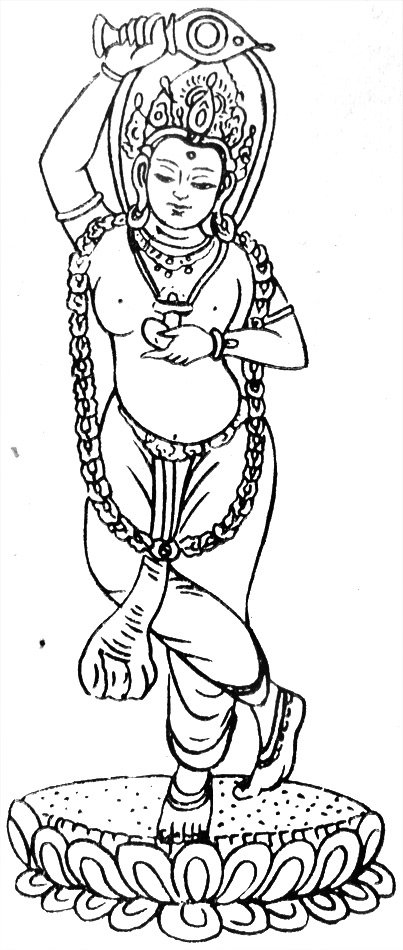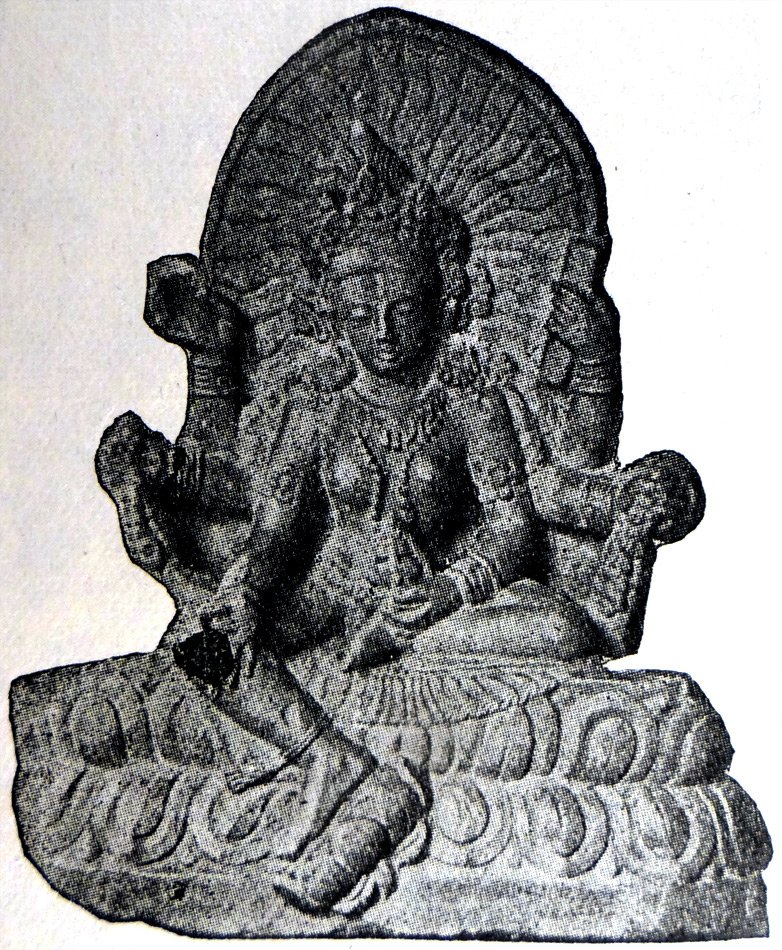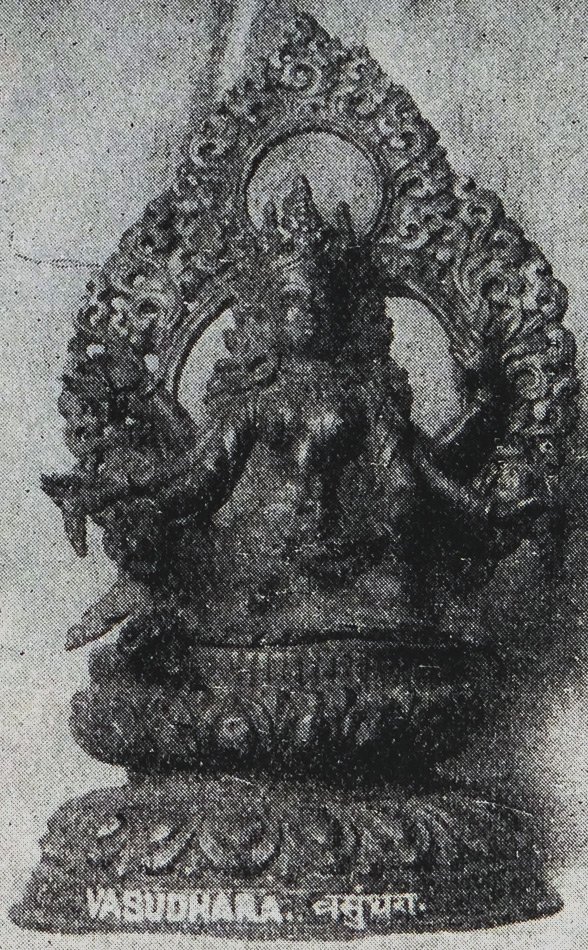The Indian Buddhist Iconography
by Benoytosh Bhattachacharyya | 1958 | 51,392 words | ISBN-10: 8173053138 | ISBN-13: 9788173053139
This page contains an iconography image of Emanations of Ratnasambhava: Vasudhara and represents figure 186-188 of the book Indian Buddhist Iconography, based on extracts of the Sadhanamala English translation. These plates and illustrations represent either photographs of sculptures or line-drawing reproductions of paintings or other representations of Buddhist artwork.
Figure 186-188 - Emanations of Ratnasambhava: Vasudhārā
 Fig. 186: Vasudhārā (Nepalese Drawing) |
 Fig. 187: Vasudhārā (Nepal) |
 Fig. 188: Vasudhārā (Baroda Museum) |
Colour: yellow;
Face: one;
Arms: two;
Symbol: ears of corn.
Vasudhārā is the consort of Jambhala and bears the image of either Akṣobhya or Ratnasambhava on her crown. Several Sādhanas in the Sādhanamālā describe her form which is invariably two-armed. As none of the Sādhanas mentions the Āsana, she may be represented in any attitude, standing or sitting. She is richly decked in ornaments and is invariably accompanied by her attendants. Her complexion is always yellow, and she carries in her left hand the ears of corn with the vessel that showers gems, while the right hand exhibits the Varada-mudrā.
Images of Vasudhārā are not generally met with in sculpture. She accompanies Ucchuṣma in the unique Sarnath image already referred to. The other image from Sarnath is mutilated beyond recognition. In both cases, however, she is represented standing.
Fig. 186 illustrates a Nepalese drawing of the goddess.
Vasudhārā is sometimes represented as one^ faced and six-armed, and as sitting in the Lalita attitude. In the three right hands she exhibits the Namaskāra-mudrā, the Varada-mudrā and the ears of corn. The first left hand has the book, the second the ears of corn, and the third on the lap carries the vessel containing jewels. Her hair rises upwards in the shape of a flame, she is beautifully decked in ornaments and her expression is truly peaceful.
Fig. 187 represents this variety of the goddess and is a fine specimen of Newari art.
Fig. 188 illustrates a beautiful bronze image of Vasudhārā in the Baroda museum.
Images of Vasudhārā are found in Tibet but not in China.
